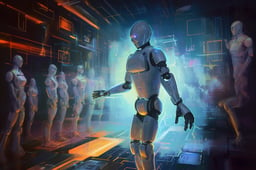What are Neural Networks?
NNs are brain-inspired computational models used in machine learning to recognize patterns & make decisions.
Aug 30, 2023 · 7 min read
How do neural networks "learn"?
Are neural networks the future of AI?
Why are neural networks compared to the human brain?
Do neural networks make decisions on their own?
RelatedSee MoreSee More
blog
What is a Generative Model?
Generative models use machine learning to discover patterns in data & generate new data. Learn about their significance & applications in AI.
Abid Ali Awan
11 min
blog
What is Narrow AI?
Narrow AI refers to artificial intelligence systems that are designed to perform specific tasks and operate under limited constraints.
Abid Ali Awan
7 min
tutorial
Introduction to Deep Neural Networks
Understanding deep neural networks and their significance in the modern deep learning world of artificial intelligence
Bharath K
13 min
tutorial
Building Neural Network (NN) Models in R
In this tutorial, you will learn how to create a Neural Network model in R.
Abid Ali Awan
16 min
tutorial
A Comprehensive Introduction to Graph Neural Networks (GNNs)
Learn everything about Graph Neural Networks, including what GNNs are, the different types of graph neural networks, and what they're used for. Plus, learn how to build a Graph Neural Network with Pytorch.
Abid Ali Awan
15 min
tutorial
Recurrent Neural Network Tutorial (RNN)
Learn about the most popular deep learning model RNN and get hands-on experience by building a MasterCard stock price predictor.
Abid Ali Awan
14 min

